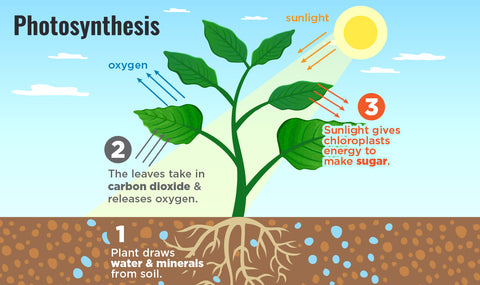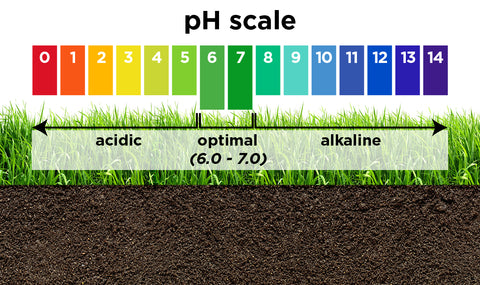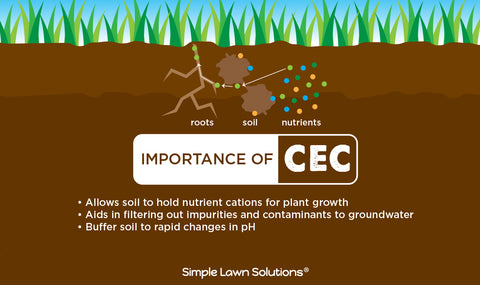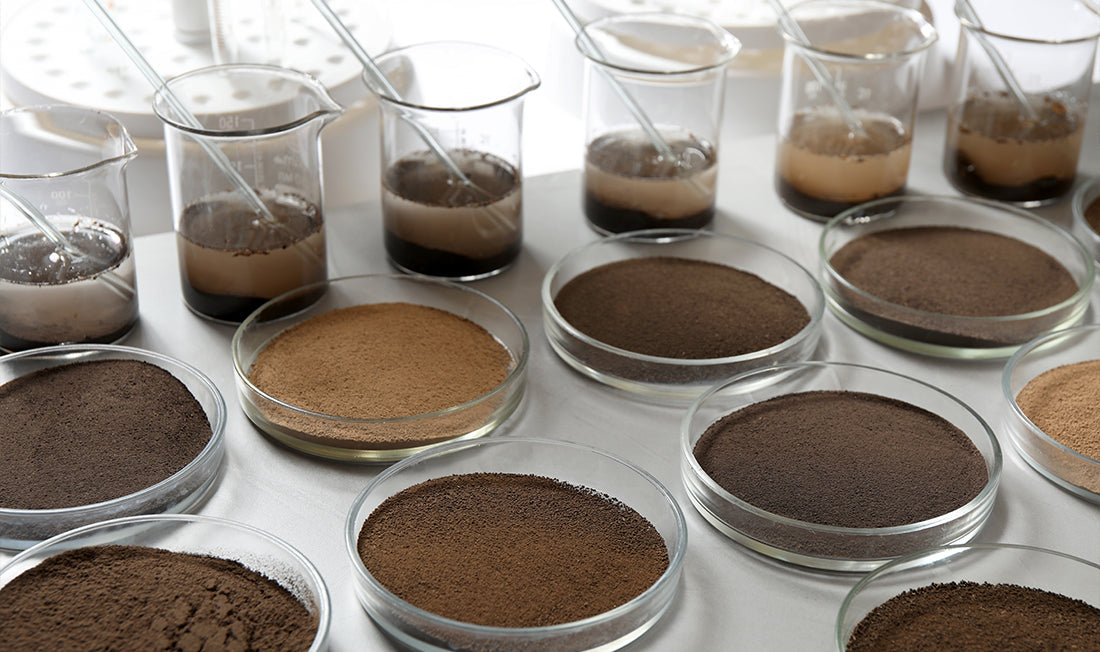Soil testing is the most important lawn care task. The results from the soil test will determine what type of fertilizers with the proper nutrients are required within the soil to produce an optimal growing environment for turfgrass. Additionally, the pH of the soil is stated in the results, which is a significant factor when trying to grow the “perfect lawn.”
In early spring, soil testing samples are submitted to the local county extension agency, and forwarded to the testing university of each state for analysis. Samples are tested in the laboratory and broken down into columns for macronutrients and micronutrients. Bar graphs display the overall amount of a particular nutrient within the soil in 3-4 sections. Low, medium, optimal, and optimal high or high are almost identical verbiage one will see when test results are reviewed.
Reading Soil Test Results
Low Range: The low-section bar graph represents each nutrient with low levels of availability for the roots. Nutrients that are low in the soil require amending with the same nutrient that is low until an optimal level has been accomplished. A complete soil test will list both macronutrients and micronutrients. Nitrogen, Phosphorus, and Potassium (NPK) are macronutrients, and they are required in more significant quantities within the soil for lawns to reach their fullest potential. Secondary macronutrients include sulfur, calcium, and magnesium. Smaller amount of micronutrients are needed for plants. Any macronutrient or micronutrient that is severely deficient will be stated as “low” on the soil test results.
Medium Range: Nutrients that are deficient but can sustain turfgrass will be stated as “medium.” Although medium quantity doesn’t supply optimal nutrient levels, it does provide enough to sustain plant life. The most significant difference when comparing low to medium levels is that medium levels allow the plant to sustain itself and survive. Still, low levels will not allow long-term survival without adding more of a nutrient already low. Once the nutrients run out, grass can’t survive without an energy source.
Optimal Range: The desired level for all plants and turfgrass is Optimal on test results. This is the ideal range where all nutrients are present in quantity so that biological processes like photosynthesis, Chlorophyll production, and respiration can occur at a regular biological pace within the plant tissue. It is only possible for all nutrients within the soil to be stated as optimal if previously engineered to be perfect soil.

Above Optimal Range: Nutrients found to be above optimal range are in excess and can cause an imbalance within the soil and alter the plant's ability to absorb the required nutrients for everyday functions. An overabundance of macronutrients and micronutrients creates toxicity within the root zone. Fertilizers applied without soil test reports lead to plants becoming too succulent and weaker. This can lead to turf diseases as the grass becomes weaker under seasonal stresses such as heat, drought, or excessive soil saturation.
What is Soil pH?
The pH scale starts at 0 and ends at 14. Seven on the pH scale is neutral, while 0 – 6.9 is firmly to slightly acidic, and 7.1 – 14 is alkaline. Most turfgrasses grow well in 6.0 – 7.0, except centipede and paspalum, which grow better in more acidic soils. When soil becomes too acidic, a pH below six can alter root development and nutrient absorption.
Soil pH will influence the availability of soil nutrients to plants and how the nutrients react. Many elements become less available to roots at a low pH, while others, such as iron, aluminum, and manganese, become toxic within the root zone. pH plays a very significant role in successfully growing turfgrass.

What is Cation Exchange Capacity (CEC)?
Cation exchange capacity (CEC) measures the soil's ability to hold positively charged ions. It influences the soil's ability to hold onto essential nutrients and provides a buffer against soil acidification. It influences soil structure stability, nutrient availability, soil pH, and the soil's reaction to fertilizers and other ameliorants. Soil ameliorants are inorganic and organic chemicals within the soil. Conditioning products can enhance soil quality and improve turfgrass health, growth, and healing.
Soils with CEC values below 12 are generally considered inadequate at holding cation nutrients. Soils with less than five CEC values are considered extremely poor; these soils will struggle to support turfgrass. Soil CEC values typically range between 12-25 for most well-performing turfgrasses.

The Importance of Organic Matter (OM)
Organic matter improves soil structure while increasing water infiltration and nutrient-holding capacity. It also enhances root growth into more porous soil. This results in better plant health and allows more movement of mobile nutrients to be absorbed by the roots. The ideal soil organic matter level is 2 – 3 %. If the organic matter level falls below 2 – 3 %, the nutrient and nutrient-holding capacity of the soil becomes very limited. Average plant growth during the growing seasons cannot be supported. Therefore, the organic matter must be increased by topdressing with screened and clean compost to increase the organic matter percentage.
Soluble Salts (salinity) in Soil
Salinity is a measure of the total amount of soluble salts in soil. As soluble salt levels rise, it becomes more difficult for turfgrass to extract water from the soil. Some turfgrasses are more resistant than others, but they become dehydrated as the salt levels exceed their ability to absorb water. Total soluble salts are the total amount of salt dissolved in the soil extract and are expressed in parts per million (ppm). The salts include substances that form common table salt.

High-soluble salts burn grass roots and reduce their ability to absorb water and nutrients. Water will continue to move when the concentration of salts inside the root cells is higher than in the soil. Salinity values above two begin to cause problems with salt-sensitive turfgrass, and values above four are problems for many lawn and landscape plants.
Why Should You Soil Test?
Soil test results and recommendations are required to benefit the grass and the environment. Following the recommendations is highly recommended to provide the soil with proper nutrient alignment for biological processes. When recommendations are not followed, soil inconsistencies worsen, increasing toxins and decreasing the turfgrass’s ability to function correctly.
Many internal parts must work in coordination with one another within the soil so turfgrass can grow to its fullest potential. Maintaining harmony and balance within the soil can only be sustained by testing soils. Understanding the science behind soil testing can seem complicated and confusing. However, it can be made easier to understand by focusing on pH, NPK, and what is needed within the soil to improve lawns.
If you have any questions about your lawn, or need help reading your soil test, fill out our form or send us an email at hello@simplelawnsolutions.com for a free custom lawn plan.










2 comments
Hello Francis, we can provide you with a customized lawn care plan, please send us an email at hello@simplelawnsolutions.com
A great article, thank you.
Can you send me your free lawn schedule..